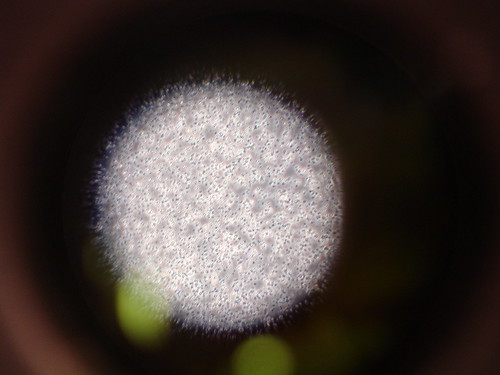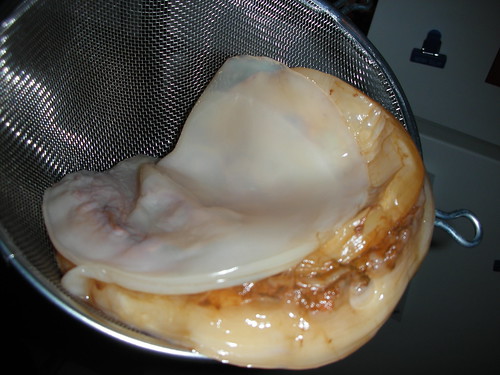| |
|
 |
| Bacteria |
by kaibara87 on Flickr |
|
- A micro-organism or microbe is
an organism that is microscopic (too small to be seen by the naked human
eye).
- The study of microorganisms
is called microbiology
- Microorganisms are everywhere
- inside us, on us, in our food, water, air we breathe...
- Are vital for life on Earth
- Mostly are useful but some
are harmful
|
 |
| Isolated bacteria - Micrococcus luteus |
by NEPMET on Flickr |
|
- Most microorganisms are unicellular (single-celled).
- However, this is not universal, since some multi-cellular organisms are microscopic while some uni-cellular bacteria like Thiomargarita Namibiensis are macroscopic and visible to the naked eye.
|
 |
| Bacteria solution |
by kaibara87 on Flickr |
|
- Microorganisms are very
diverse; they include bacteria, fungi, protozoa and microscopic plants
(green algae).
- Some microbiologists also
include viruses, but others consider these as non-living.
|
 |
| River of algae and bacteria |
by moonlightbulb on Flickr |
|
- Bacteria are single celled organisms e.g can cause food poisoning, sore throat etc
- Fungi can be single celled like yeast used in bread, beer making or multi-cellular like mushrooms
- Algae can be unicellular used in toothpaste or multi-cellular like seaweed
- Protozoa are unicellular - can cause malaria or be useful for sewage treatment
|
|
- As some microorganisms can
fix nitrogen, they are a vital part of the nitrogen cycle, and recent
studies indicate that airborne microbes may play a role in precipitation
and weather.
- Microbes are exploited by
people in biotechnology, both in traditional food and beverage
preparation, and in modern technologies based on genetic engineering.
|
 |
| A molecular model of the bacterial cytoplasm |
by dullhunk on Flickr |
|
- There are many pathogenic
microbes which are harmful, since they invade and grow within other
organisms, causing diseases that kill people, other animals and plants.
|
 |
| water and rocks with algae |
by i eated a cookie on Flickr |
|
- Most living things which are
visible to the naked eye in their adult form are Eukaryotes,
including humans.
- However, a large number of
eukaryotes are also microorganisms.
- Unlike bacteria and archaea,
eukaryotes contain organelles such as the cell nucleus, the Golgi
apparatus and mitochondria in their cells.
- The nucleus is an organelle
which houses the DNA that makes up a cell's genome. DNA itself is arranged
in complex chromosomes.
|
 |
| Plated Bacteria |
by Biology Big Brother on Flickr |
|
- Mitochondria are organelles
vital in metabolism as they are the site of the citric acid cycle and oxidative phosphorylation.
- They evolved from symbiotic bacteria and retain a remnant genome.
- Like bacteria, plant cells have cell walls, and contain organelles such as chloroplasts in addition to the organelles in other
eukaryotes.
- Chloroplasts produce energy
from light by photosynthesis, and were also originally
symbiotic bacteria.
|
 |
| If you leave washing up long enough.... 2 |
by cbamber85 on Flickr |
|
- Some species form
extraordinarily resilient spores, but for bacteria this
is a mechanism for survival, not reproduction.
- Under optimal conditions
bacteria can grow extremely rapidly and can double as quickly as every 10
minutes
|
 NeoK12.com - Educational Videos, Lessons, Quizzes & Presentations
NeoK12.com - Educational Videos, Lessons, Quizzes & Presentations







